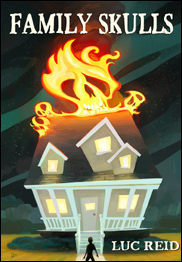About two and a half years ago, when I set about putting together a Kindle edition of my 2006 book Talk the Talk: The Slang of 65 American Subcultures, I thought I was looking at a couple of week’s work in whatever time I could spare. It turns out that updating my term database with the original edition improvements, adding three new subcultures, putting in multiple photographs for every subculture, editing, adding some terms that didn’t fit in the first edition, and otherwise preparing this new edition have taken … well, two and a half years. Yet I think it was worth it! Check it out here.
I was very pleased to find that no significant corrections were required from the original edition. Despite my careful research, I had half expected the day after the original book’s release to be deluged with telephone calls by irate members of the subcultures I’ve documented correcting my facts-but there weren’t any, then or since.
My favorite credibility moment came when a blog post upbraided me for using the term “shank” to refer to a cell-made prison weapon instead of what the post’s author (who like me, has not served time) put forth as the proper term, “shiv.” I didn’t have to defend my research, though: an actual former inmate commented on the post instead, saying that “shiv” was a popular media term, but the word that was really used “inside” was “shank.”
Regardless, whether you check the book out to browse the new photographs of all the unexplored corners of American culture, to test your knowledge of carnival slang (the public radio show Wait Wait, Don’t Tell Me used the original edition to do this to guest Julia Sweeney back in 2006), to come up to speed on Renaissance Faire or snowboarding slang, or to just enjoy the range of words model rocketry enthusiasts use when they talk about things blowing up, there’s likely to be something of interest to practically any culture afficianado in what BoingBoing! called “the kind of quirky thing that is endlessly fascinating and full of odd insights into worlds you never suspected existed.”
If you’re interested in a review copy, whether for publication or simply for your blog, Amazon, or Goodreads, etc., please use the contact form here on my Web page.
The print edition should be released next month.
(By the way, astute readers may have noticed that I mention adding three subcultures, but the number listed on the cover only increased from 65 to 67. That’s because hip-hop slang, which to my way of thinking is much too widely used to be considered subculture speak, was removed from the new volume. Instead, I made it available for free on Talk the Talk‘s Web site at www.subculturetalk.com.)



 New York Times reporter Charles Duhigg’s book
New York Times reporter Charles Duhigg’s book 